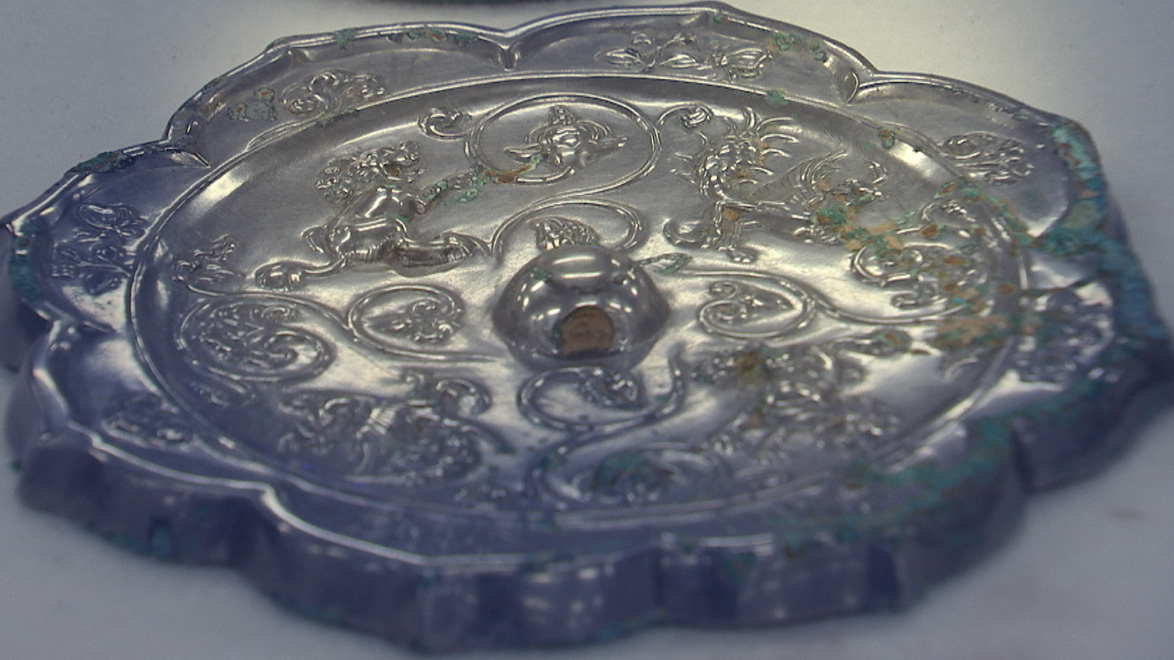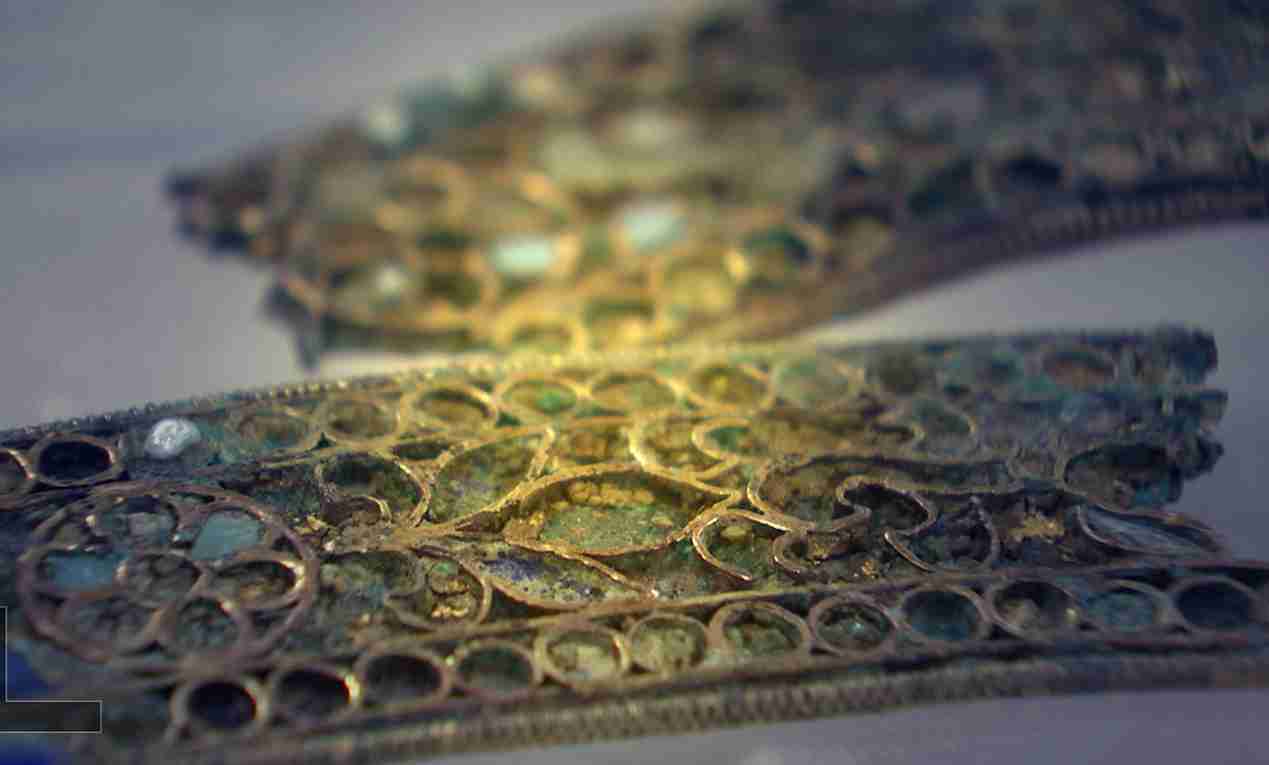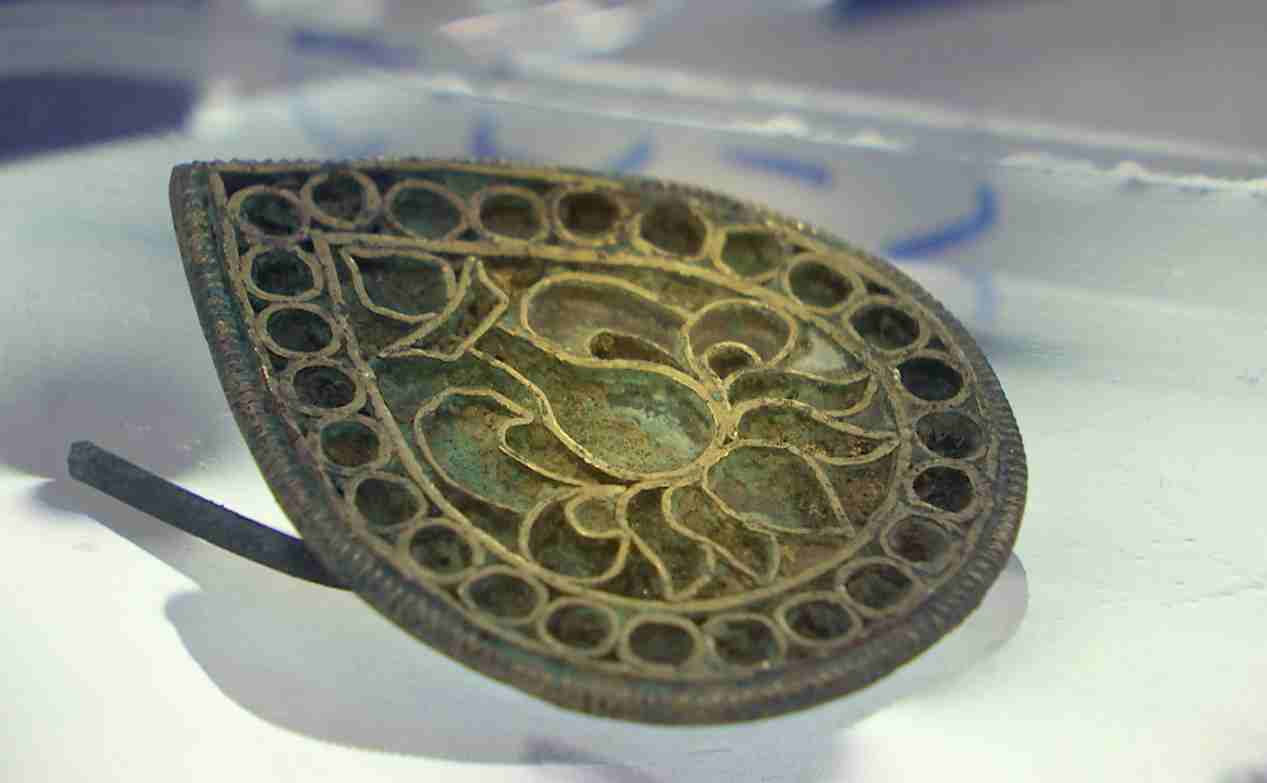
Culture
12:56, 15-Apr-2019
Unearthed cultural relics 1,000-plus years old help retracing Silk Road cultural exchanges
Updated
13:39, 15-Apr-2019
By Liu Yang, Zhao Jing
03:33

Some elegant cultural relics dating back almost 1,200 years were unearthed last year in northwest China's Shaanxi Province.
Those cultural relics are valuable to the study of the in-depth connection between China and other countries along the ancient Silk Road, even beyond.
The ancient Silk Road, which began where it is now known as Xi'an, Shaanxi's provincial capital, witnessed the exchange of goods and ideas among the civilizations it connected.
And some of those connections have been recovered by Chinese and foreign archaeologists in central Asia.
Now countries along Belt and Road routes are working together to better preserve the relics with advanced technologies.
The Research Center of Materials Science and Archaeology of China's Northwestern Polytechnical University signed a laboratory agreement last year with Kazakhstan's National Museum.

A headwear excavated in northwest China's Shaanxi Province in 2018 is a treasure of ancient art dating back to the late Sui Dynasty (581-618) or early Tang Dynasty (618-907), April 11, 2019. /CGTN Photo
A headwear excavated in northwest China's Shaanxi Province in 2018 is a treasure of ancient art dating back to the late Sui Dynasty (581-618) or early Tang Dynasty (618-907), April 11, 2019. /CGTN Photo
"Our university has the advantage of researching cultural relic protection, we have a strong academic team in materials science and other related majors," said Professor Yang Junchang from Northwestern Polytechnical University.
"We mainly focus on materials and ancient technology research, material degradation mechanism research, and cultural protection material selection for the future," he added.
There is substantial evidence that gold used in ancient China as early as 1600 BC during the Shang Dynasty (1600-1046). Gilt technology was carried forward and widely used in the Han and Tang Dynasties.
The latest researches have found similarities in the designs of the relics found in China with those from their own countries, suggesting the integration of different cultures during ancient times.
Researchers from Kazakhstan, Uzbekistan, Tajikistan and Iraq said they are amazed how familiar these cultural relics are in terms of the shape, design, and meaning behind it.
At the Shaanxi Academy of Archeology, many relics show the emergence of rich cultures in the Mediterranean and Asia. For example, many of them reflect aesthetic elements from the cultures of Sogdia, Sassanian Persia, and India.

A headwear excavated in northwest China's Shaanxi Province in 2018 is a treasure of ancient art dating back to the late Sui Dynasty (581-618) or early Tang Dynasty (618-907), April 11, 2019. /CGTN Photo
A headwear excavated in northwest China's Shaanxi Province in 2018 is a treasure of ancient art dating back to the late Sui Dynasty (581-618) or early Tang Dynasty (618-907), April 11, 2019. /CGTN Photo
Experts say technology is key in unveiling those connections.
To enhance scientific and technological cooperation in archaeological conservation and talent cultivation, Northwestern Polytechnical University has welcomed nearly 80 leading international universities and museums to form the Belt and Road Cultural Heritage Conservation and Sci-Tech Innovation Alliance.
The alliance will focus on cultural heritage and promoting the sustainable and healthy development of cultural undertakings with innovative research on cultural heritage protection.
The goal is to adopt a research method that uses interdisciplinary integration to carry out scientific protection, talent training and skill training of cultural heritage in the fields of cultural relic restoration, cultural relic protection, cultural relic information processing, and cultural relic display.
The alliance upholds the spirit of openness and inclusiveness and promotes people-to-people exchanges, and it is made up of government departments, institutions of higher learning, cultural heritage research institutions and business units in several countries along the Belt and Road Initiative (BRI) routes.

SITEMAP
Copyright © 2018 CGTN. Beijing ICP prepared NO.16065310-3
Copyright © 2018 CGTN. Beijing ICP prepared NO.16065310-3